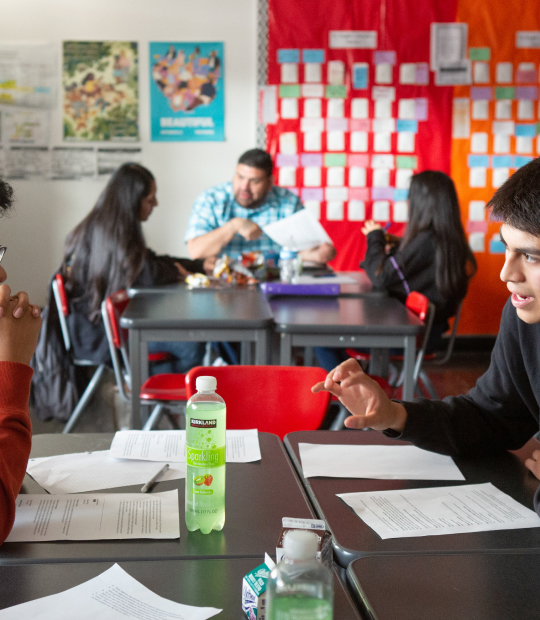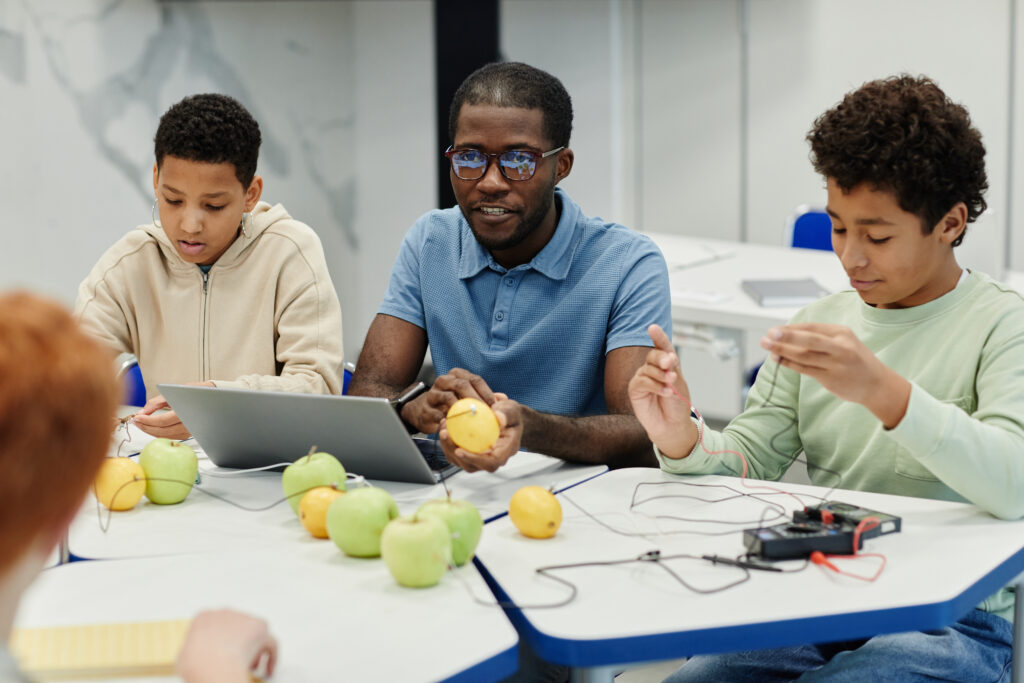Partnering with students to co-design a more supportive classroom


In response to students reporting on surveys feeling a decreased sense of connectedness in the classroom, post online learning. Ms. Perro and her students co-designed and tested different ways to increase belonging and care. Each year, Ms. Perro engages in a continuous improvement process alongside her students; co-creating different change ideas that might increase belonging.
High Tech Middle North Country takes student mental health and school and classroom culture seriously. For the past several years, one of the many things they’ve tested is a regular student survey about many topics. The school has always had a strong culture of vulnerability and empowerment. The school administrators and educators are committed to sharing and learning alongside students as well as constantly testing out better ways to improve their school.
When Ms. Perro, an eighth-grade humanities teacher, examined student survey results from her classroom, she was excited to see positive student feedback about teacher care for students. At the same time, she noticed less positive results for questions related to students’ sense of belonging in the classroom. She became curious about why two ideas that might seem closely linked yielded such different responses from students.

As a project-based learning teacher, student input was already an essential aspect of classroom operations. Ms. Perro presented the survey results to the students and used an interactive activity for collective sense-making. The class first started with why belonging is important in classrooms and then they analyzed and made sense of the survey response data. Each step was done through a variety of individual, partner, small group, and whole class protocols. Throughout this process, Ms. Perro said she remained vulnerable and open to change.
After unpacking the data, students moved into planning change ideas. Together, the class brainstormed ways they could create the conditions for more belonging, selected priority ideas, and then designed the details. Ms. Perro had a clear understanding that belonging is dependent on the community and that the community (students) should have agency to decide how to improve the sense of belonging. By creating the conditions to share decision-making power with students, Ms. Perro was simultaneously creating a collective sense of ownership.

Several new student-designed change ideas were implemented in the class. In one change idea, which students dubbed Positive Eye, students receive randomized name cards at the beginning of class and are tasked to “spy” on the student whose name they received with the goal of catching them doing something positive. On the note card, students can shout the student out for that positive behavior, express an appreciation, or simply write a kind note.
Students also designed and implemented Community Circles which provided opportunities for students to build community and empathy and promote interconnectedness in a safe and empowering space. Community Circles were structured with guiding questions, specific tools to support sharing and listening, and shared norms that students focused on during community circle time.
Ms. Perro also tested out a daily, social-emotional check-in form with students. The form provided a more consistent and private way for students to share how they were feeling and if they needed a check-in with their teacher. More broadly, Ms. Perro could quickly assess how students were feeling in her class while also providing more focused support for certain students.

A month after the survey review and the implementation of student-designed change ideas, Ms. Perro reissued the student survey. “Once the students had ownership over what it meant to belong in the classroom and what they designed then that data shot up,” said Ms. Perro. She added, “If they did not help design [changes], the belonging data would not be where it was, because it would just be me pushing an agenda.”
From these experiences, Ms. Perro’s classroom emerged as an even more democratic, student-driven space. For example, students now have leadership roles and responsibilities related to the improvement process. Students have redesigned the norms, laws, and rules of their classroom. MS. Perro said, “It fit what they felt was more authentic to them…immediately, I started to see all the data around classroom belonging, student voice and choice, and meaningful work, all just started to increase”
Ms. Perro continues to expand and deepen this approach to teaching; working with other teachers in her school and seeking more ways to expand her impact on students.
There’s more than one way to build a student-powered classroom. Explore these resources to get started.

